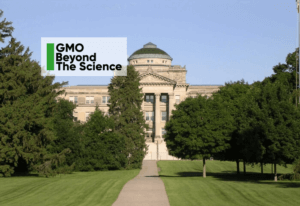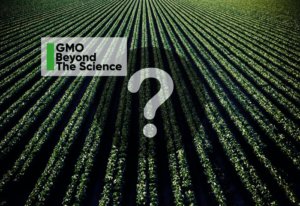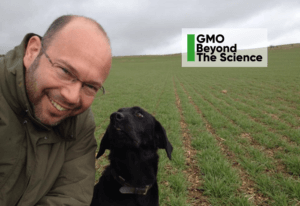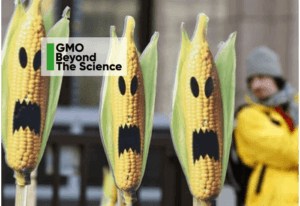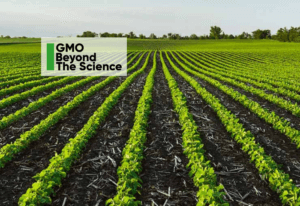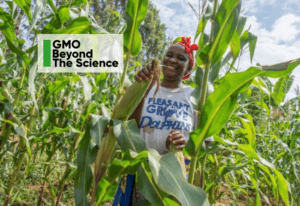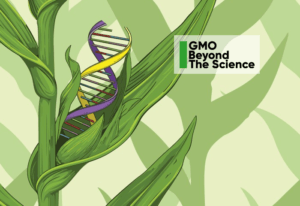


Will Gene Editing and Other New Breeding Techniques Provide a ‘Second Chance’ for Worldwide Embrace of Genetically Engineered Crops?
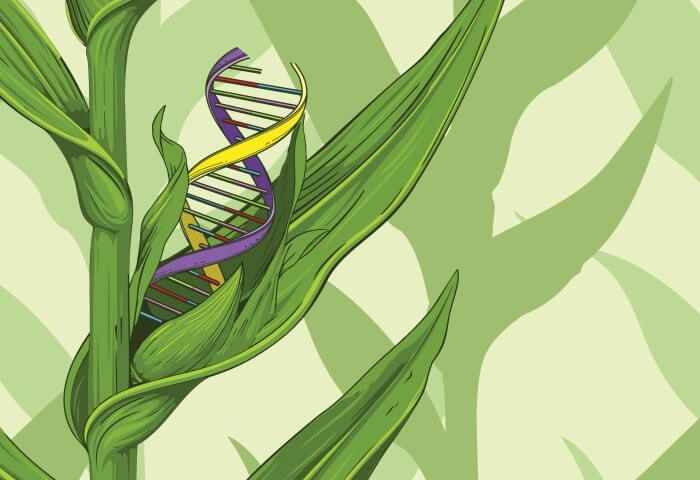
Jon Entine, Executive Director of the Genetic Literacy Project | June 13, 2018
- Anti-GMO activists, aided by Russian propaganda, have managed to block the developing world from adopting biotech crops, mostly through political action in Europe, Africa’s largest agricultural trading partner
- New Breeding Techniques (NBTs), particularly CRISPR gene editing that mimics natural breeding, may provide a regulatory work-around to open the door for a new generation of biotech innovation in the US, Europe and developing countries
- The ability of gene editing to create crops with higher yields, resistance to diseases, increased nutrition and more climate adaptability has spurred interest even among hardened organic skeptics of biotechnology
“Responding to attacks from the anti-GMO movement,” an exasperated geneticist once said to me, “is like trying to stuff a squiggly octopus into a small box; whenever you think you’ve got it contained, you realize there is a tentacle dangling out somewhere.”
That was certainly the case in 2012. For the first time in years, the public debate over genetically engineered (GE) crops had begun to shift in the favor of science and an embrace of the safety of “GMOs” (a term coined by the anti-biotechnology movement to demonize genetic innovation; after all, who would want to eat a ‘modified organism’?!).
The biggest movement came in precaution-obsessed Europe, which because of a series of unfortunate food scares in the late 1990s and the dedicated opposition of Greenpeace and other activist groups had become a hotbed of biotechnology skepticism. And because Africa is Europe’s major agricultural import market, the EU’s rejection of GMO crops had had a huge impact on the largest food-insecure region in the world. GMO products were non grata.
The tide began to turn, decidedly many scientists thought, with the release in 2010 by the European Commission of an influential study, “A Decade of EU-funded GMO Research.” The EC had spent more than €200 million from 2000-2010 (adding to €100 expended previously by the EC) on 50 projects and more than 400 research groups in part to address the charge by activists that much of the key research supporting the safety of GMO crops had been generated by the corporations that developed the seeds, and was therefore suspect. The EC’s conclusion:
…The main conclusion to be drawn from the efforts of more than 130 research projects, covering a period of more than 25 years of research, and involving more than 500 independent research groups, is that biotechnology, and in particular GMOs, are not per se more risky than e.g. conventional plant breeding technologies.
A slew of other safety endorsements followed. With the public’s fears beginning to abate, disaster struck in the form of a controversial study published in a prominent publication by French activist biologist Gilles-Éric Séralini, who claimed that his research showed that rats fed GMO corn and the herbicide glyphosate over a two-year period developed cancerous tumors. Pictures of the grotesquely disfigured rats were prominently featured in his article and splashed across newspapers around the world.
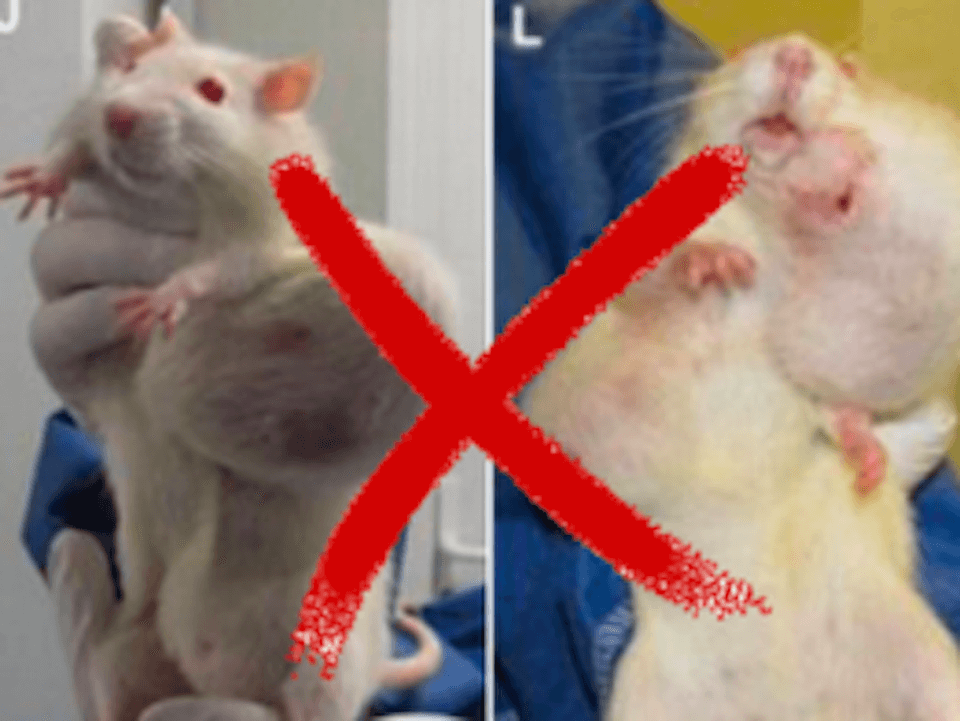
Overnight, despite years of edging itself back into public favor, the movement to bring GE crops to Africa and other developed nations was dead. Anti-GE groups were mostly headquartered in the EU, which by tradition provided key funding for their activities, even when they contradicted mainstream science and in this case the findings of the EC itself. Kenya banned imports of GE food in 2012, based largely on the Séralini study, despite the fact that it was immediately exposed as flawed by the mainstream science community and was eventually retracted. (As recently as last week, it was reported that three European studies funded by the European Union reaffirmed the debunking of the rat study.)
Independent research in Kenya, Uganda, Nigeria and elsewhere in Africa screeched to a halt. Rather than providing a critical technology boost in the continent’s efforts to modernize farming and meet the soaring calorie demands of a continent growing in prosperity and population, the crop biotechnology revolution in Africa was dead-in-the water.
Second chance?
Six years later, the world and Europe and Africa in particular, have an opportunity to get the science—and the politics—right. Classic crop biotechnology is transgenic—that is, it involves the transfer of a trait-carrying gene from one plant to another. The most common GE crops are varieties of soybean, canola, cotton and corn that have been engineered for either herbicide tolerance or insect resistance (or in some cases both). Opponents, mostly European nonprofit non-governmental organizations (NGOs) aided by Russian propaganda have jacked up fears of ‘messing with nature’ and raising the ludicrous specter of Frankenstein-like creations, such as tomatoes with fish heads. Scaring people unsophisticated about science, understandably suspicious about corporate intentions and worried about the availability of healthy food was relatively easy.
With the advent of what has come to be known as New Breeding Techniques (NBTs) and the relative paucity of Rube Goldberg-like regulations surrounding these new techniques of genetic engineering, agricultural biotechnology has been granted a second chance.
NBTs offer scientists easier ways to do cisgenic breeding—involving no “foreign” DNA—allowing the development of new plant and animal varieties. NBTs like CRISPR/Cas9, TALENs and ZFN do not fit neatly into the GMO definitions crafted by the various regulatory agencies around the world. Its proponents believe gene editing is similar to but faster and more precise than mutagenesis (creating new varieties by using radiation or chemicals), which is not regulated; there are hundreds of mutagenized crops sold as organic. It’s also similar to what can naturally occur in nature.
But the regulatory process remains fluid. To date, no internationally agreed-upon regulatory framework for gene editing exists, so each country is in the process of evaluating whether, and to what extent, current regulations are adequate for research conducted with, and applications and products related to, gene editing. Biotechnology critics call NBT’s “hidden GMOs” and examples of “extreme engineering” with the “horrific potential for unintended effects” and are pushing to regulate them under a general GMO umbrella. Currently, because of the labyrinthal GMO regulatory system in the US, it takes more than $136 million and 7-13 years to get a crop approved. In Europe, it’s far worse; few crops have been approved and those that have mostly languish.
Biotechnology supporters believe that regulating them as GMOs would hobble innovation—much like has happened to classic GE crops. “Using CRISPR-Cas9 we can create a plant that in ALL aspects is identical to one that is not considered to be a GMO,” notes Stefan Jansson, plant professor at Umeå University in Sweden.
The Swedish Board of Agriculture, like regulatory agencies throughout Europe, has confirmed the belief, now embraced by regulators around the world, that CRISPR gene editing does not fall under the European GMO definition.
But European NGOs are lobbying doggedly to reverse those findings. Campaigners are adamant that new plant breeding techniques are just another attempt at selling GMOs to Europeans through a loophole or ‘back door’ approach.
A report by the Greenpeace Research Laboratories noted, for instance, that like traditional genetic engineering techniques (including those used for cisgenesis/intragenesis), unintended changes to plant chemistry arising from the use of gene-editing techniques may result.
“We are at a crossroads,” said Christoph Then of Testbiotech, an anti-GE NGO which contributed to the Greenpeace report. “The new methods known as genome editing have huge potential for radical changes of the genome. We do not have the experience to declare these products safe.”
“We are at a crossroads,” said Christoph Then of Testbiotech, an anti-GE NGO which contributed to the Greenpeace report. “The new methods known as genome editing have huge potential for radical changes of the genome. We do not have the experience to declare these products safe.”
The European Court of Justice’s advocates general ruled in January that crops and drugs created using gene-editing techniques such as CRISPR–Cas9 might and if they are nature-identical may not need to be regulated by the strict European Union rules, drafted in 2001 that govern GMOs. In other words, the ruling supports regulating these new GE innovations as products rather than based on the process that developed them. That’s similar to how the United States has traditionally regulated GE crops and counter to the process-based regulatory structure in place in Europe that has all but shut down innovation The full European court is expected to rule later this year, but usually follows the advice of its advocates general.
US gene editing regulatory challenges
The situation in the US is beginning to come into focus as well. The US Department of Agriculture determined in April 2016 that it would not regulate a mushroom and a new type of corn genetically modified with CRISPR/Cas, making them the first gene crops to be approved by the US government. According to the agency’s Animal and Plant Health Inspection Service (APHIS), these crops—and about 50 other plants they’ve reviewed—do not qualify as something the agency must regulate. (Once a crop passes the USDA reviews, it may still undergo a voluntary review by the US Food and Drug Administration.)
Another boost came when DuPont Pioneer and the Broad Institute of MIT and Harvard agreed in October 2017 to provide non-exclusive licenses for certain aspects of CRISPR technology to all biotech companies working in the field to encourage innovation.
In March, the USDA reaffirmed that it would no longer regulate crops that have been genetically edited. “Genome editing…can introduce new plant traits more quickly and precisely, potentially saving years or even decades in bringing needed new varieties to farmers,” the agency stated. Transgenic crops, which are modified to include DNA from other species like bacteria or insects to make them pest-resistant, for example, will still be closely monitored by the regulatory agency.
For supporters of biotechnology innovation, these are heartening developments that could provide a shot-in-the-arm to both industrialized countries and developing nations. CRISPR gene editing techniques have been used to develop still-unapproved versions of crops with sharply higher yields, resistance to common plant diseases, increased nutrition or better adaptability to climate change—all of which would be a boon for countries in Africa, other developing nations and the industrialized world.
For supporters of biotechnology innovation, these are heartening developments that could provide a shot-in-the-arm to both industrialized countries and developing nations.
But some or many of these innovations could be slowed or even stopped, even in the United States. The US Food and Drug Administration may establish its own guidelines regarding the human health risk of genetically modified crops, as well as animal gene editing, such as hornless cows bred to protect them from goring each other. The FDA recently announced in a draft document that it views CRISPR in animals as a form of gene therapy, would mean that it could be regulated as a veterinary drug. So if you want to use CRISPR to produce a hornless cow, you might have to go through the extremely expensive process of getting it approved as a new drug. The Office of Management and Budget is expected to release the FDA’s final decision on gene editing of both animals and crops this summer.
Organic breakthrough?
There are some hopeful signs beyond the regulatory battle that CRISPR might also be welcomed more by the public weary of the GMO wars. Early in June, at the 2018. CRISPRcon, a gene-editing convention in its second year, a prominent voice in the organic movement and a third-generation grain and livestock farmer announced he would be open to embracing versions of gene-edited crops that mimic naturally occurring varieties.
Klass Martens, known as an organic hardliner (he opposes soil-free hydroponic farming as an organic practice, for example), is a favorite supplier to Dan Barber, the chef at the influential farm-to-table New York City restaurant Blue Hill. He said he is hopeful that CRISPR technology could be used by organic farmers who want to grow versions of crops that help restore soil health.
“If it could be used in a way that enhanced the natural system, and mimicked it, then I would want to use it. But it would definitely have to be case by case,” he said, suggesting that gene-edited crops, because of their potential to increase sustainable farming practices, can fall within the ethos of organic.
Martens influence in the organic community is such that other farmers may similarly be open to embracing the new technology.

But regulatory shoals abound for gene editing even if the US should greenlight more liberal regulations for crops and possibly for animals. The scare tactics used by anti-biotechnology NGOs have proved enormously effective in the past, particularly in precautionary-obsessed Europe, as the Séralini Affair illustrated. Because of interlocked international trade, the countries with the most restrictive regulations often set the regulatory standard for the rest of the world, much like California’s tight restrictions set many standards for the rest of the United States.
So all eyes are on Europe, which has a history of taking the most cautious, and often the most science and innovation unfriendly, regulatory stance. European politicians frequently have ignored the findings of their own science bodies, which have consistently endorsed the safety of GMO crops, instead imposing crippling regulations. They could once again bypass their own science bodies and developing international standards and put aside EU court findings.
What would happen? The history of global GMO regulation provides dismal solace. Other parts of the world, such as trade-dependent Africa, might have no choice but to capitulate. The next year or two may well determine whether Biotechnology Innovation 2.0 proceeds more smoothly than the first iteration.

Global Farmer Network (GFN) is a non-profit advocacy group led by farmers from around the world who support free trade and farmers’ freedom to choose the tools, technologies and strategies they need to maximize productivity and profitability in a sustainable manner. Established in 2000, the Global Farmer Network is committed to inserting the worlds farmers voice in the global dialogue regarding food and nutritional security. The Global Farmer Network identifies, engages and supports strong farmer leaders from around the world who can work with others to innovate, encourage and lead as full stakeholders in the work that is being done to fill the world’s food and nutrition security gap in a sustainable manner.
The Genetic Literacy Project is a 501(c)(3) non profit dedicated to helping the public, journalists, policy makers and scientists better communicate the advances and ethical and technological challenges ushered in by the biotechnology and genetics revolution addressing both human genetics and food and farming. We are one of two websites overseen by the Science Literacy Project; our sister site, the Epigenetics Literacy Project, addresses the challenges surrounding emerging data-rich technologies.

